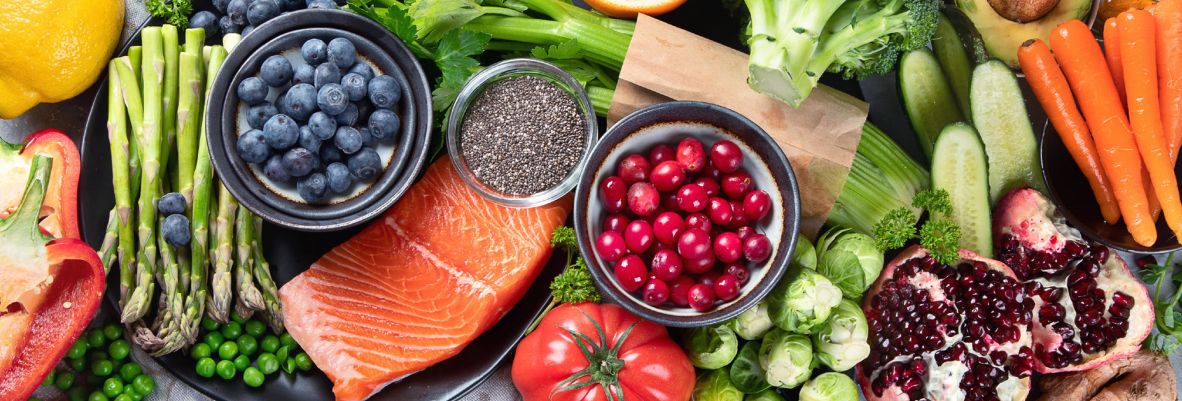Six Pillars of an Equitable Higher Education Nutrition Policy
Between the rising cost of college, insufficient financial assistance, and the ongoing pandemic, college students are being forced to…

Between the rising cost of college, insufficient financial assistance, and the ongoing pandemic, college students are being forced to choose between covering academic costs or basic needs. In a pre-pandemic 2020 survey of 38,602 students, 44% of college students attending two-year institutions and 38% of students attending four-year institutions reported facing some level of food insecurity over the past 30 days.1 Furthermore, there are striking disparities in access to nutritious food between White students and students of color: 58% of Black students and 50% of Latino students experienced food insecurity in comparison to 39% of White students.2 Solving the problem of food insecurity on college campuses is crucial to achieving equity outcomes within higher education.
This document provides six pillars that advocates should know and build upon to press their state policymakers and institutions of higher learning to make sure that all college students, especially students of color and students from low-income backgrounds, have equitable access to healthy food.
| 1 | Expand SNAP Eligibility for College Students |
| 2 | Ensure All Students Are Informed of SNAP Eligibility Guidelines |
| 3 | Hold Higher Education Institutions Accountable for Connecting Students to Nutrition Assistance |
| 4 | Ensure Nutrition Assistance Provided to Students Includes Access to Healthy Meals |
| 5 | Provide Affordable and Accessible Dining Options for Vulnerable Student Populations |
| 6 | Address Intersecting Student Identities and their Exclusion of Current Hunger Relief Policies |
State leaders must ease access to Supplemental Nutrition Assistance Program (SNAP) for college students most in need of food assistance. Under current SNAP law, students enrolled at least half-time in an institution of higher education are ineligible for SNAP, unless they meet an exemption and meet all other SNAP eligibility requirements, such as income and asset limits, household qualifications, and immigration status. These narrow SNAP eligibility requirements prevent college students from accessing food assistance, especially students of color and those from low-income backgrounds, who are most at risk of experiencing food insecurity.
✔ Ask state policymakers to expand local SNAP eligibility for college students and other individuals from low-income backgrounds.

It is estimated that 57% of students who face food insecurity and are eligible for SNAP do not receive those benefits3 — and that’s because many students simply don’t know that they are eligible. It’s important that state leaders provide clear and direct guidance regarding SNAP eligibility so that all eligible students are aware of their ability to benefit from this program, and know how to apply.
✔ Encourage state policymakers to create state-specific SNAP websites outlining eligibility requirements for college students in the state so that all eligible college students are provided the necessary information to apply for food nutrition assistance.

State leaders must ensure their higher education institutions are connecting college students to nutrition assistance resources, including SNAP and college food pantries, so that the students most in need of food assistance receive support. As state entities and places of student learning and well-being, institutions of higher education are uniquely placed to connect college students with nutrition resources. Often, colleges and universities may offer nutrition resources outside of local public benefits that students can easily access but may be unaware of. For example, more than 800 U.S. college campuses offer food pantries to their students, but many students facing food insecurity are unaware of such resources on their campus. State policymakers can ensure college students at all local higher education institutions are connected to these resources through the direct assistance of these institutions.
✔ Encourage state policymakers to require that local higher education institutions connect their students to all local nutrition resources.
A recent case study by the Hope Center for College, Community, and Justice at Amarillo College in Texas found that personalized “nudging” — which consists of targeted emails to students who might benefit from food nutrition resources the most — increased the likelihood of students seeking out nutrition resources and performing better academically.
State leaders must make sure that students who receive local nutrition assistance via SNAP or other public benefits can access healthy meals. Some college campuses can be long distances away from the nearest grocery store, and many students don’t have the means to travel off-campus. This is especially true for college campuses that serve students of color, such as 1890 land-grant institutions, which are primarily located in low-income, rural areas that are food deserts. Food-insecure students who are stuck in food deserts with limited transportation have few options when looking for nutritious and sustainable foods on a tight budget. These students are forced to make do with whatever food is available to them near campus and may not provide a stable, nutritious diet. State policymakers can partner with their local state agencies that already work to increase food access in surrounding campus communities via programs such as SNAP to provide nutritious and sustainable options for college students.
✔ Encourage state policymakers to work with their local Department of Human Services and higher education institutions to make sure that college students receiving SNAP have access to purchasing fresh and nutritious food.

Colleges and universities must provide affordable and accessible dining options for students who may be most vulnerable to food insecurity, outside of local public benefits students can receive for nutrition. The average university charges about $18.75 per day for a three-meal-a-day dining contract, compared to the less than $11 a day a single person spends on food on average nationally.4 Colleges run their dining services divisions as self- supporting enterprises, and much like businesses, are expected to turn a profit. This becomes a problem when universities force students who are barely making ends meet to purchase overpriced dining plans when they do not have the means to purchase a plan or would be better off budgeting the money themselves. Students awarded financial aid may be forced to spend this aid toward covering the costs of an unwanted meal plan, placing additional burden on students at risk of food insecurity.
State policymakers can encourage campuses to make dining plans optional so that students are not forced to purchase a dining plan regardless of financial aid status. Moreover, policymakers can ensure their state participates in the SNAP Restaurant Meals Program (RMP) to provide disabled, elderly, and homeless students with accessible hot meals. The SNAP RMP allows certain SNAP beneficiaries — who might not be able to prepare meals for themselves or who do not have permanent housing for storing and preparing food — to buy prepared meals at restaurants with their SNAP benefits. By participating in the SNAP RMP and encouraging institutions of higher education to make campus dining plans optional, state leaders can incentivize reforms to campus meal plans.
✔ Encourage state policymakers to require that local higher education institutions make campus dining plans for students optional and participate in the SNAP Restaurant Meals Program (RMP).
State leaders must address the vulnerability of specific student subgroups to food insecurity and consider how certain subgroups that are excluded from current hunger relief policies can be included. For example, undocumented students are more likely to be food insecure given that they face potential out-of-state tuition costs, lack state financial aid, and are prohibited from receiving SNAP benefits due to their immigration status. Similarly, students who were formerly incarcerated are also more likely to be food insecure given barriers to accessing federal benefits, including a lifetime ban on SNAP for justice-impacted individuals with drug-related felony convictions. State policymakers can opt out of, as well as demand an end to, federal restrictions on local public benefits that exclude and affect the most vulnerable student populations facing food insecurity.
✔ Encourage state policymakers to remove bans or modified bans on receiving SNAP and Temporary Assistance for Needy Families (TANF) for students who were previously incarcerated, and for those states who have not yet opted out of the federal ban on the receipt of SNAP and TANF for individuals with felony drug convictions, encourage state policymakers to opt out of this ban.
✔ Encourage state policymakers to advocate for the end of federal restrictions on local public benefits for undocumented students.